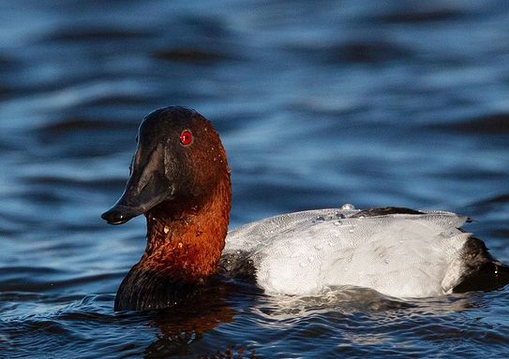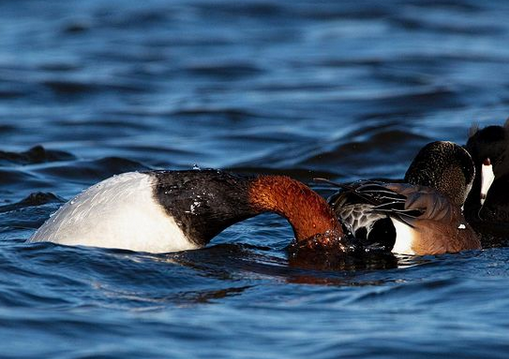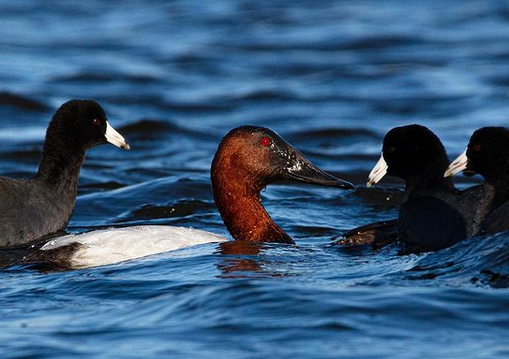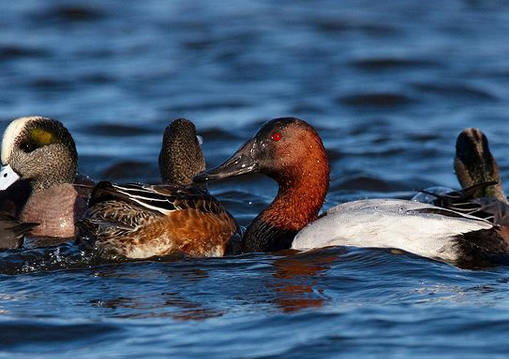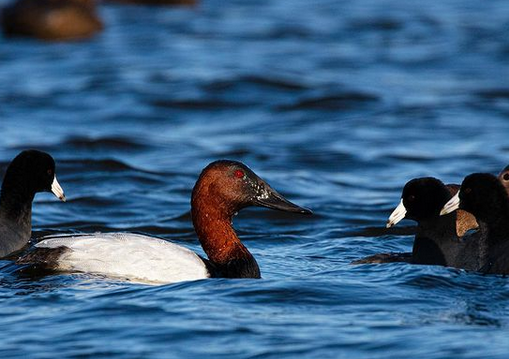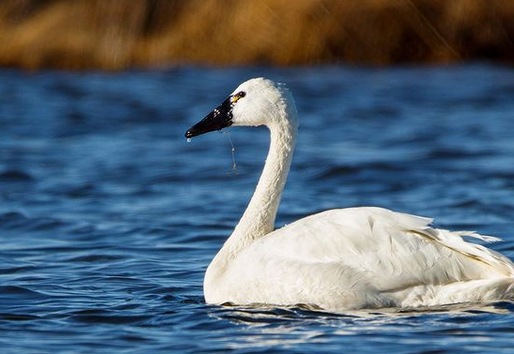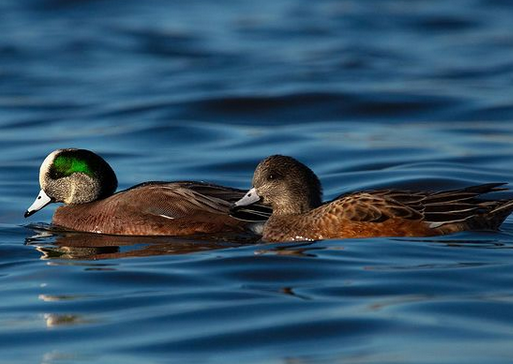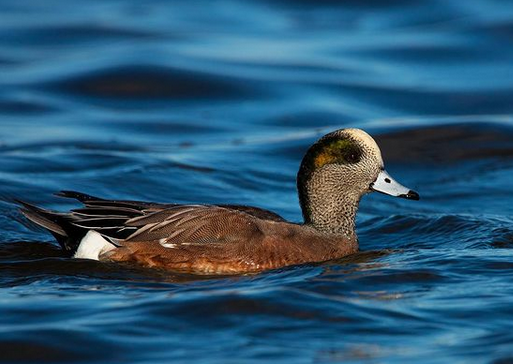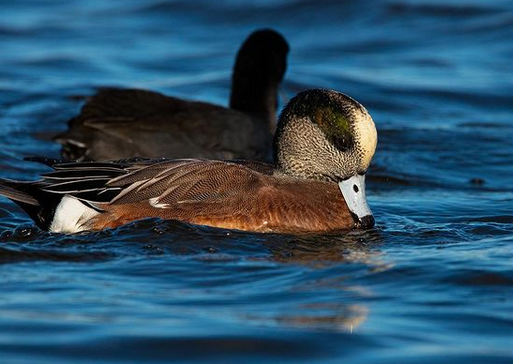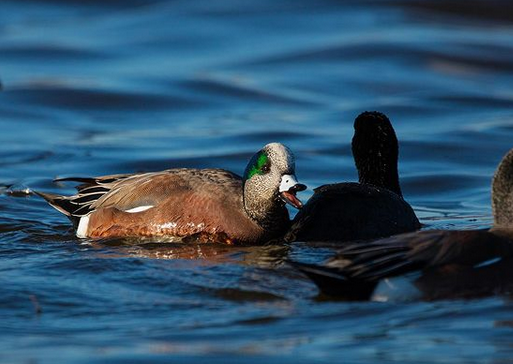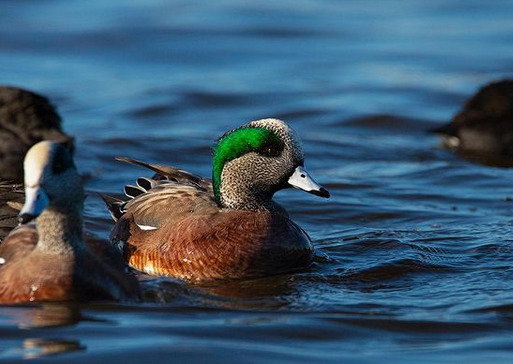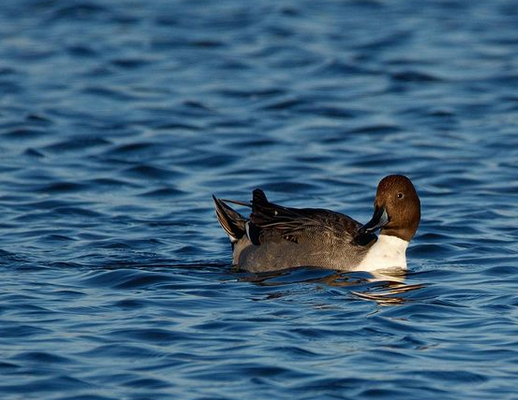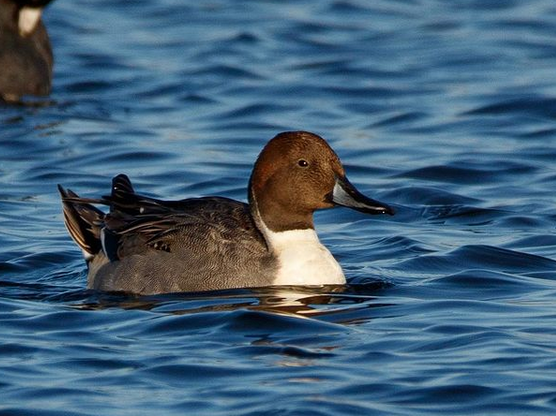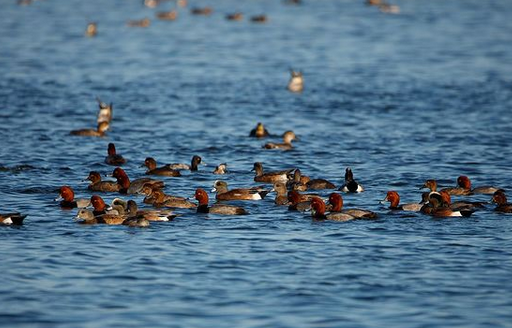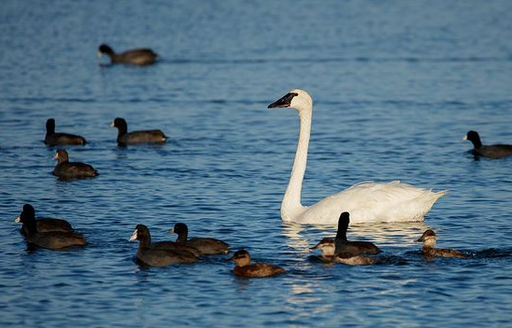Here’s a duck that I was happy to see, the Canvasback.
I photographed this pair last month paddling around the North Pond at the Pea Island NWR in the OBX. It was neat to sit in the grass at the waters edge to watch them diving and squabbling for a meal amongst a mixed flock of Redheads, American Coots and American Wigeons.

A wintertime resident of North Carolina, Canvasbacks are found in our coastal counties from late October through early April.
They are usually spotted in large bodies of shallow slow moving waters such as marshes, estuaries, lakes and bays. The large ponds here at Pea Island NWR are perfect examples of their preferred habitat.
Voracious consumers of aquatic vegetation, their favorite food is wild celery. So much so that the Latin species name of the Canvasback (Aythya valisineria) is similar to that of the wild celery (Vallisneria americana).
They are also fond of eating pondweeds, water lilies, sedges, mollusks, small crustaceans, minnows and insects.

The largest species of diving Duck in North America, these birds are absolutely regal looking as the glide across the water.
One of my favorite things about the Canvasbacks drake’s appearance are their vibrant red eyes paired with that dark red head. When you make eye contact with them, it feels like they’re staring directly into your soul haha!
The females are quite lovely too with their soft palette of brown, grey and buff plumage. I thought they were quite beautiful with the sunlight reflecting off of them set against the blue water.
I’ll be returning to Pea Island in a couple of weeks for another birding trip and am hoping that I’ll have another opportunity to catch a few shots of them in flight before they depart for their breeding grounds in the spring.
Can’t wait to get back out there!
Photos by @sally_siko of @birdwatching_nc on the fabulous full frame @canonusa
#5Ds

